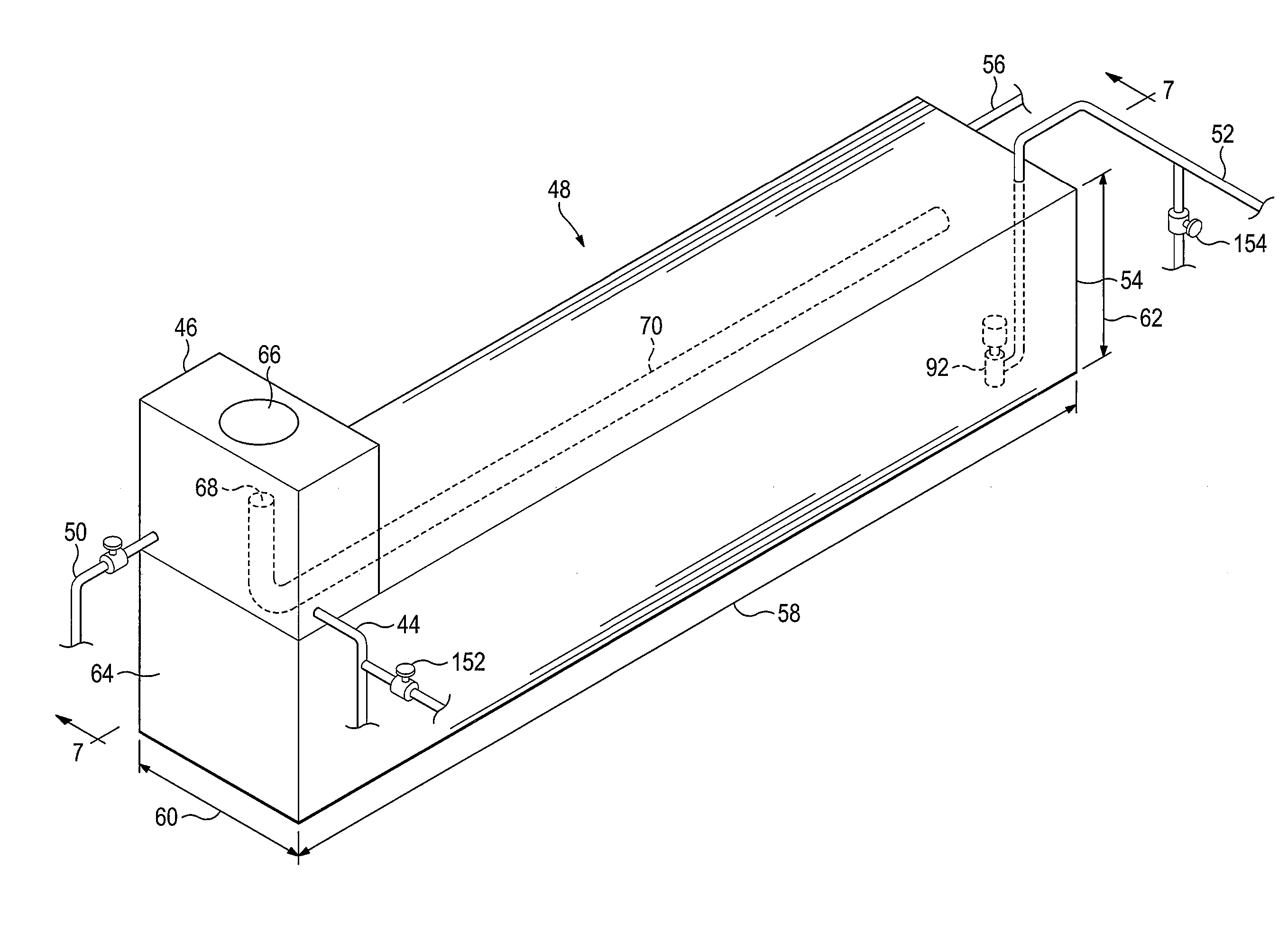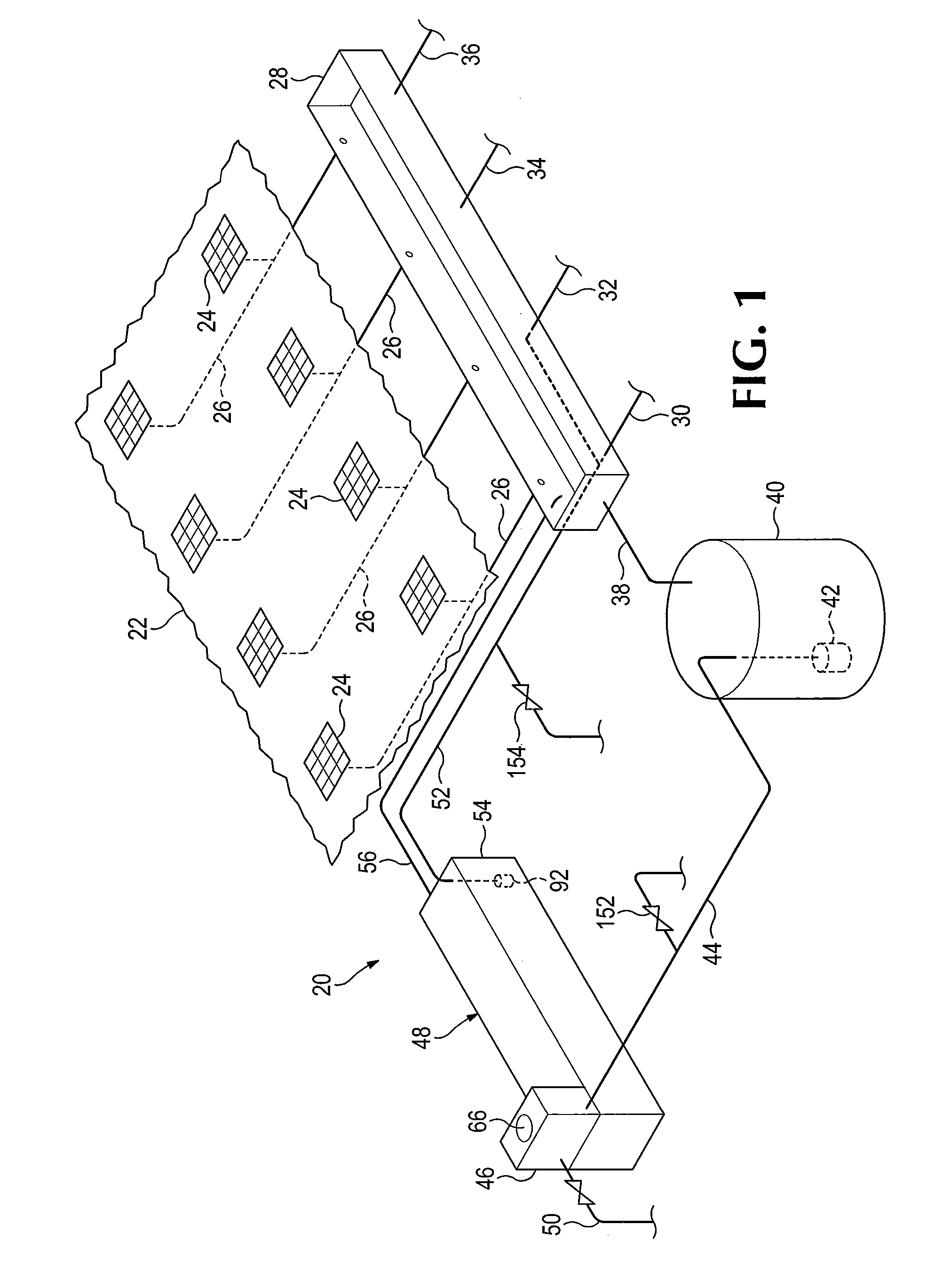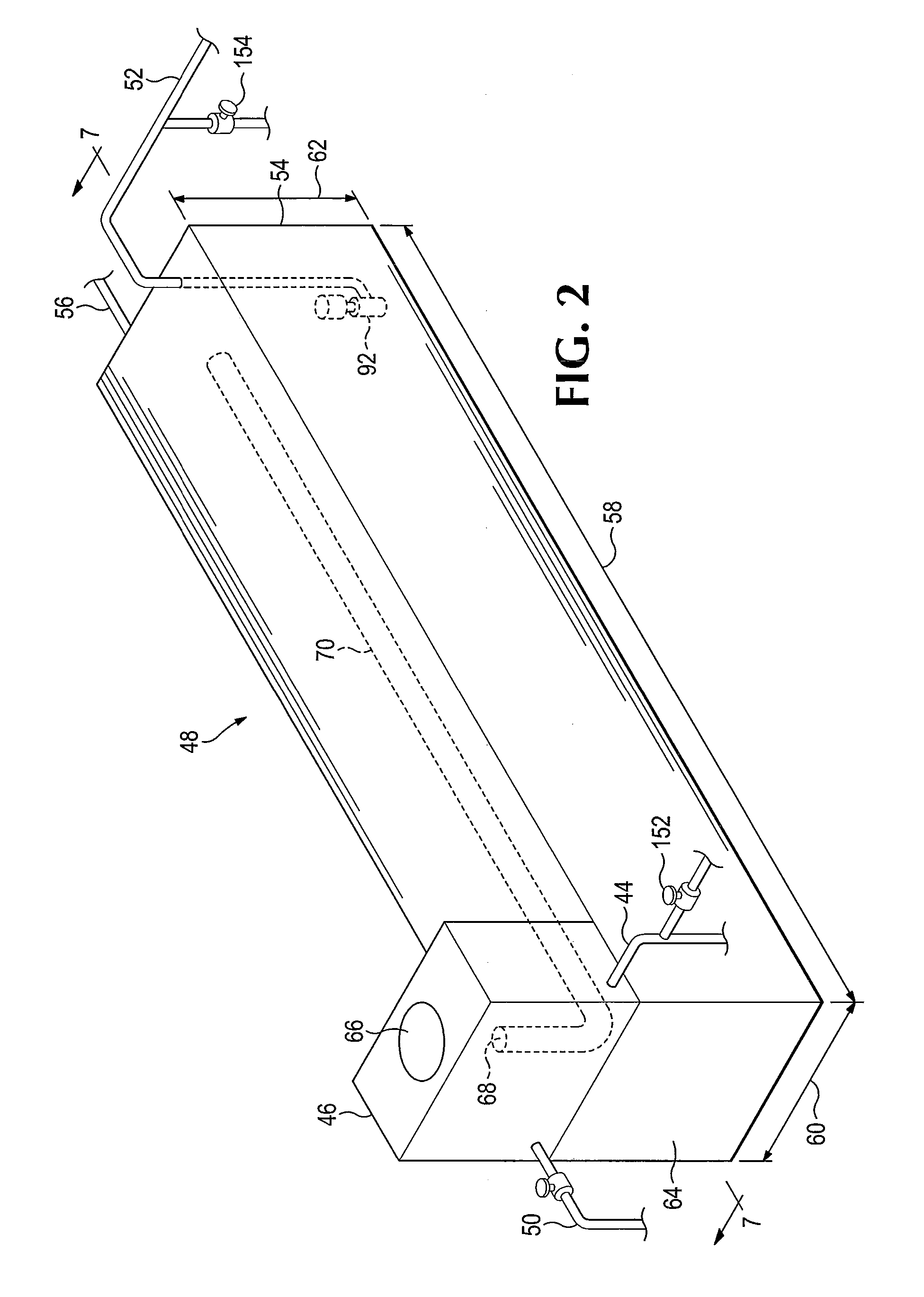Treatment of Storm Water
a technology for storm water and treatment, applied in water cleaning, separation processes, filtration separation, etc., can solve the problems of low flow velocity, undetected cost of manufacture and maintenance, and low literature or research on the control and mitigation of storm water runoff from industrial sites. achieve the effect of maximizing contact time, low flow velocity and maximizing distribution
- Summary
- Abstract
- Description
- Claims
- Application Information
AI Technical Summary
Benefits of technology
Problems solved by technology
Method used
Image
Examples
Embodiment Construction
[0028]Referring now to the drawings that form a part of the disclosure herein, and referring first to FIGS. 1 and 2, a storm water collection and treatment system 20 shown in FIG. 1 may be used to collect runoff from an area 22 in which storm drains 24 collect runoff into underground collection pipes 26. Catch basins in storm drains 24 may include fabric filter inserts to retain larger granular and suspended solids to prevent clogging of the collection pipes 26 and downstream conduits and protect system pumps. The underground collection pipes 26 may lead to one or more intermediate collection containers 28, such as a drainage consolidation trench that may have been available before installation of the storm water collection and treatment system disclosed herein, or that may be constructed specifically to receive and accumulate quantities of runoff collected from the drainage area 22, as a buffer to deal with surges in runoff quantity.
[0029]In the exemplary storm water collection and...
PUM
| Property | Measurement | Unit |
|---|---|---|
| concentrations | aaaaa | aaaaa |
| concentrations | aaaaa | aaaaa |
| height | aaaaa | aaaaa |
Abstract
Description
Claims
Application Information
 Login to View More
Login to View More - R&D
- Intellectual Property
- Life Sciences
- Materials
- Tech Scout
- Unparalleled Data Quality
- Higher Quality Content
- 60% Fewer Hallucinations
Browse by: Latest US Patents, China's latest patents, Technical Efficacy Thesaurus, Application Domain, Technology Topic, Popular Technical Reports.
© 2025 PatSnap. All rights reserved.Legal|Privacy policy|Modern Slavery Act Transparency Statement|Sitemap|About US| Contact US: help@patsnap.com



